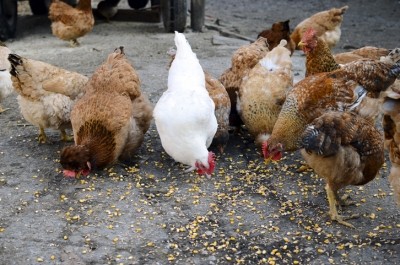Chile turns to feed imports to support expanding meat production

The US Department of Agriculture (USDA) released details of the annual feed use and production in Chile last week in an agricultural specialist’s report from the Foreign Agricultural Service.
Overall, wheat production is forecast to grow in marketing year (MY) 2018/19 based on an expansion in harvested area and the anticipation of higher prices, the specialist said.
“Domestic consumption will increase by 1% following population growth, and imports will decrease by 3% and total 1.35m metric tons,” he added.
However, domestic corn production is anticipated to fall 5.4% to about 1.05m metric tons in MY 2018/19, he said. “Imports will increase by 7.9% and reach 2.05m metric tons in order to maintain supply of animal feed for poultry and pork production,” he said.
Producing corn and wheat
Despite increased need for the feed crop, the area planted in corn decreased from MY 2016/17 to MY 2017/18, the specialist said. However, yields increased and total production grew from 1.06m metric tons to 1.11m metric tons.
“The corn market in Chile is very competitive and producers that keep making profits or covering operating costs are the ones that have economies of scale, technology, and knowledge of the production and commercialization process,” he added.
Yields, however, are expected to drop about 5% in MY 2018/19 based on hot summer weather and dry growing conditions, he said. The forecast is for production to total about 1.05m metric tons for MY 2018/19.
Wheat production in MY 2017/18 increased about 8.8% to reach 1.47m metric tons, he said. The growth in production followed an expansion of planted area as producers anticipated higher prices.
The expectation in MY 2018/19 is for production to be 1.51m metric tons based on planted area and average yields as there has been no major damage reported to wheat crops from weather or pests, the specialist said. The forecast for MY 2019/20 is for wheat growth to increase by 2.6%.
Driving wheat and corn use, imports
Wheat consumption in Chile surpasses domestic production, the specialist said. However, the majority is used in food products.
“Feed represents the remaining 13% of wheat consumption, mainly destined for the salmon farming industry (in the southern part of the country),” he said. “Chile is the second largest producer of salmon in the world after Norway.”
“Feed and residual consumption, including feed for the pork, poultry and salmon industries will reach 350,000 MT in MY2018/19 and increase 4% annually along with the salmon production,” he added.
Wheat imports declined by 11.6% from MY 2016/17 to 2017/18, the specialist said. Argentina was the main supplier followed by Canada and the US.
Wheat imports are anticipated to fall by about 3% in MY 2018/19, with imports staying flat in 2019/20 as domestic production reaches 1.55m metric tons, he said.
Unlike wheat, about 90% of corn consumed in Chile is used in animal feed – especially to support the production of poultry, pork and salmon, the specialist said. “Chile does not produce enough corn to supply feed to the Chilean poultry and pork production industries, so feed processing companies import corn and other feed inputs to satisfy the domestic demand,” he added.
Broiler meat production increased 5.8% in the calendar year 2018, compared to 2017, and pork production grew by 7.6%, he said. The production expansion was driven by international demand and is anticipated to continue into calendar year 2019.
A corresponding increase in feed use in marketing year 2018/19 forecasts consumption to be up 3.8%, he said.
In 2017/18, corn imports grew by about 20% from the previous marketing year, reaching about 1.83m metric tons, the specialist said. In marketing year 2018/19, imports are anticipated to increase by 7.9% to about 2.05m metric tons.
“Chilean companies import corn to supply feed for the pork and poultry industries,” he said. “Other products that companies import for feed are corn gluten meal, wheat, soybeans, and soybean meal.”
Chile imports the majority of its corn gluten meal from the US, but imports other corn products predominately from Argentina and Paraguay, he said. In MY 2017/18, Argentina had about a 92% market share for corn imports.
“Chile’s corn imports from Argentina increased by 23% in MY 2017/18 over MY 2016/17,” the specialist said. “Imports from the United States decreased by 27% during the same period because Argentine corn was the cheapest in the market.”
Corn producers report that domestic prices are not high enough to support production causing the planted area to fall, he said.










